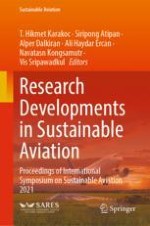Sustainable aviation is a long-term strategy aimed at providing innovative solutions to the challenges facing the aviation industry. The International Symposium on Sustainable Aviation is a multi-disciplinary symposium that presents research on current sustainability-based issues and future trends in the field of aviation from an economic, social, and environmental perspective. The conference provides a platform offering insights on a broad range of current issues in aviation, such as improving aircraft fuel efficiency, fostering the use of biofuels, minimizing environmental impact, mitigating GHG emissions, and reducing engine and airframe noise. ISSA allows researchers, scientists, engineers, practitioners, policymakers, and students to exchange information, present new technologies and developments, and discuss future direction, strategies, and priorities in aviation and sustainability.
